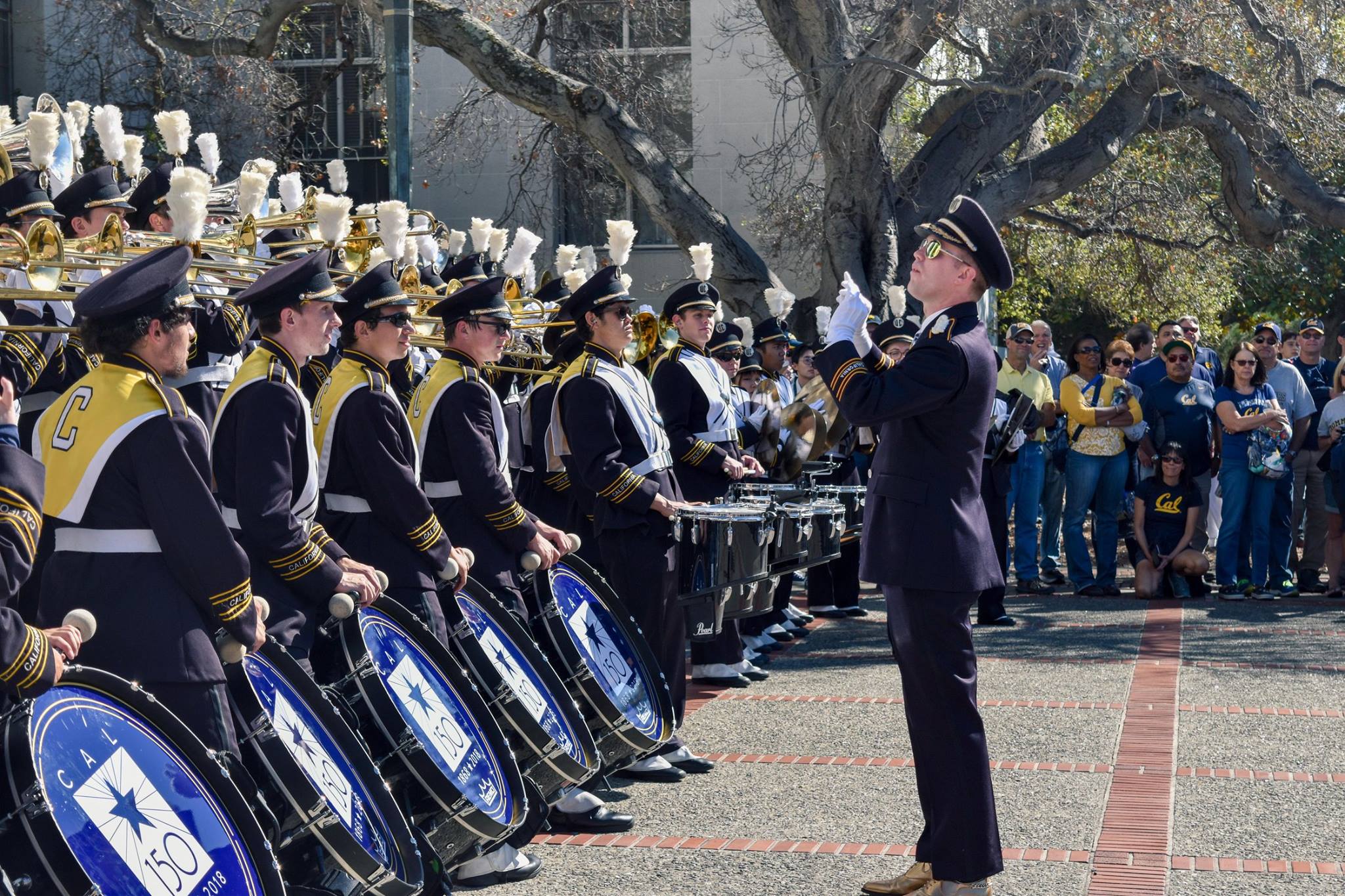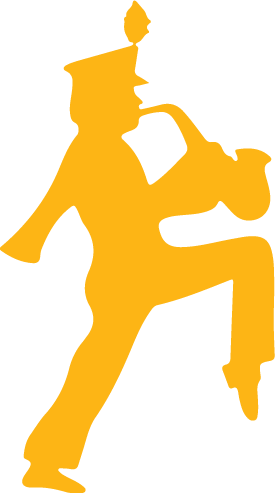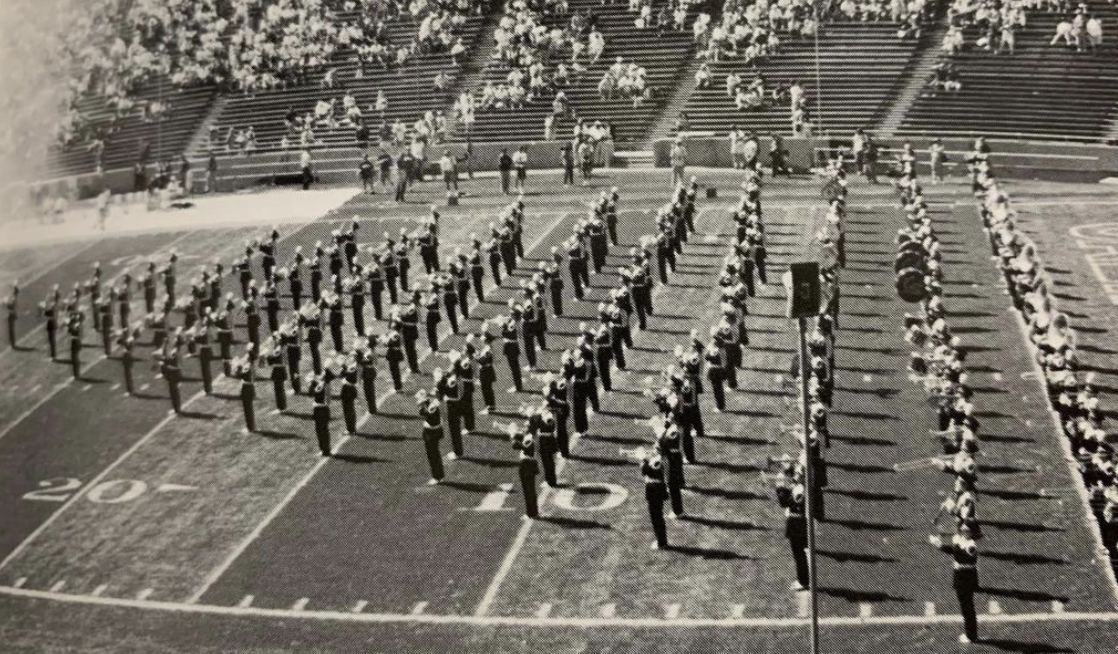Tradition
The Cal Band has been an integral organization in student spirit and life on the Berkeley campus since 1891. As a result of this history, a unique culture and shared experience unites band members of all generations. Every year, the current Cal Band and Cal Band Alumni perform for Alumni Band Day. At the conclusion, a joint formation of over two-hundred past and current band members spell out “California” before the fans at California Memorial Stadium.
Like any long-running organization, the traditions of the Band are numerous, and have established a unique culture. Leadership through student-run activities, camaraderie through the Big Bear-Little Bear mentoring program, and lifelong communication amongst friends through the Cal Band Alumni Association are all part of the tradition that each member of the organization shares.
A Brief History of the Cal Band
The University Cadet Band, the predecessor to the present-day Cal Band, was founded in 1891. After the ROTC absorbed the Cadets, the Band members asked the ASUC to sponsor a student-run band, which first performed on November 25, 1923. The Band continued to grow, and the organization’s first Constitution was written and adopted in 1925, formalizing the unique system of student leadership which continues to this day. The Cal Band operates on a Constitution and bylaws that each member must adopt before formally joining the band.
In 1930, Charles Cushing (Student Director ’27) became the faculty director of the Cal Band. The next year, the Band had 150 members, a home in Room 5 Eshleman Hall, and new uniforms. In the late 1930’s, the Band played for the ground-breaking of the Golden Gate Bridge, the opening of the Bay Bridge, and marched in the 1938 Rose Bowl. The Cal Band went through a transition after the 1950 Rose Bowl, where its performance appeared lackluster compared to the Ohio State Band. The Band studied several Big Ten Bands and adopted its current high-stepping style. From 1952 to 1973, the Band was under the direction of James Berdahl (Student Director ’38). Until the spring of 1954, when a totally new constitution was adopted, the Cal Band was run by a three-member executive committee (Senior Manager, Representative-at-Large, and Director). This restructuring of the Band’s government laid the groundwork for all the successes that followed. The new constitution became effective with the first five-member executive committee (Senior Manager, Representative-at-Large, Drum Major, Student Director, and Director) in the 1954 fall season.
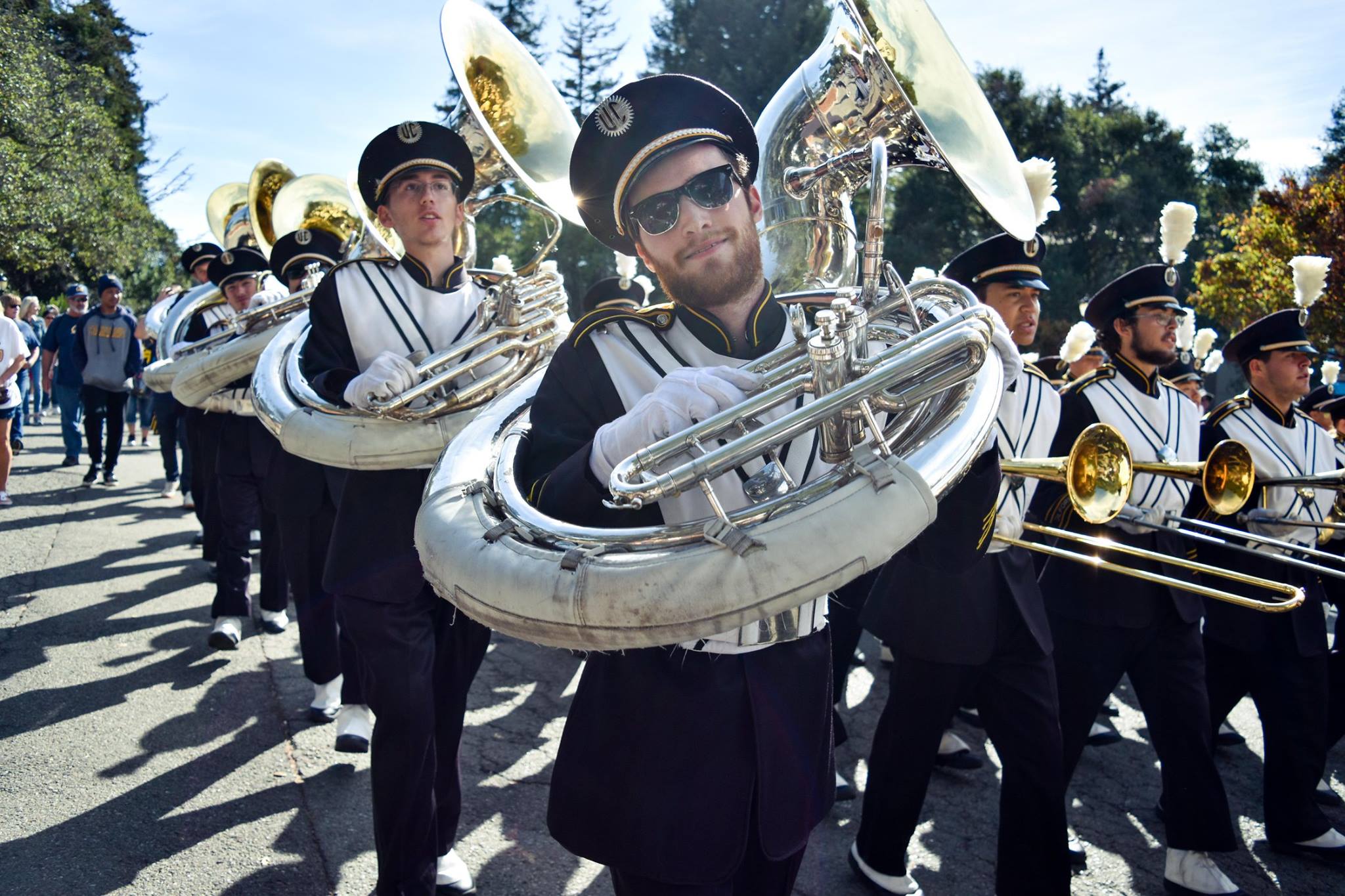
In 1950, the Straw Hat Band was founded; it continues to this day to be a trademark of the Cal Band. Recognized by the State Department, the Cal Band represented the United States at the 1958 World’s Fair in Brussels, Belgium and later went to the Rose Bowl in 1959! Several Cal Band traditions were established in the 1960’s: the “bomb,” a flash powder device announcing the Band’s entrance to the field before pregame; the “flying wedge” formation also in the pregame show; the “Script Cal”; and the full-field spread during “America the Beautiful.” The year 1965 saw the production of the first Cal Band Spring Show after the Band returned from its first national tour. The Band also toured California in 1968 for the University’s Centennial.
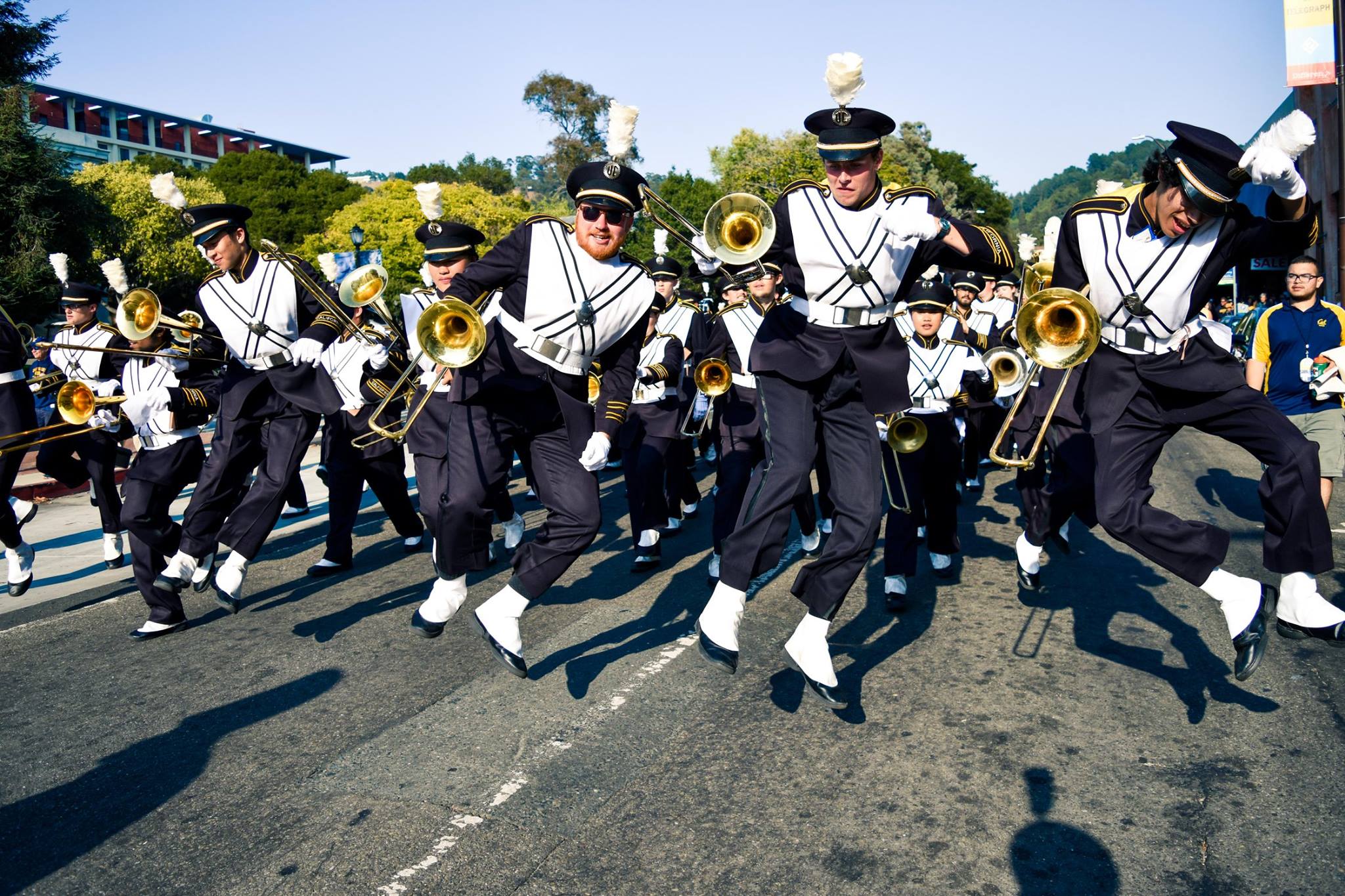
There were three major changes in the Band in the early 1970’s. First, the Cal Band got a new director, Robert O. Briggs (Cal Band ’47-‘50). Secondly, the Band moved from the sponsorship of the ASUC to that of the University. Third, women were admitted into the Band for the first time in 1973. The Band toured Japan in 1970 and the United States in 1976.
In 1991, the Cal Band received the Berkeley Citation, celebrating the 100th year of the University of California Marching Band. The Band also had the good fortune of going to four Bowl games in six years, including the Citrus Bowl, the inaugural Alamo Bowl, and the Aloha Bowl. In 1995, Robert M. Calonico, (Student Director ’75) returned to California Memorial Stadium as the Band’s new director, replacing longtime director Robert O. Briggs. Also in that year, the Cal Band boasted sharp, untarnished colors of their new uniforms (cut in the traditional style).
Within the last ten years, the Band has been to numerous events around the United States and the world. In 2010, 2012, and 2014, the Band led the San Francisco Giants’ victory parade. In 2016, the Band traveled to Asia, performing at the Great Wall. Additionally in 2016, the Band marched in the Super Bowl 50 Halftime Show with Coldplay, Bruno Mars, and Beyoncé, as well as recording backup instrumental and vocal tracks. In 2018, the Band led the Golden State Warriors victory parade in downtown Oakland.
A major event of 2018 was also the entrance of new director Matthew Sadowski. “Teaching others how to give life-changing musical performances while learning from them about their own backgrounds and interests is my passion,” said Sadowski. “I am excited to contribute to the continued growth and success of UC Berkeley’s Marching Band and Wind Ensemble.”
For over one hundred years, the Cal Band has been motivated by a desire to perform, serve the University, and foster school spirit. The Band has truly earned its well-deserved title: “The Pride of California.”
